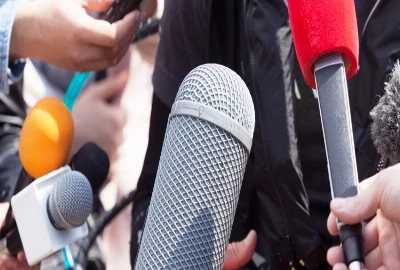Commentary Over Content: When the Reaction Becomes the Main Event

The internet was once ruled by original creators—musicians uploading demos to SoundCloud, vloggers crafting carefully edited YouTube videos, and artists sharing fresh content on Tumblr and Instagram. But scroll through TikTok, YouTube Shorts, or Twitter/X today, and you’ll notice something different: the commentary is often bigger than the content itself.
Whether it’s YouTube reaction channels eclipsing the music videos they respond to, TikTok stitches overshadowing the original clip, or Twitter threads dunking on a news headline, the trend is clear. In 2025, we’re in the era of commentary over content.
But why are audiences increasingly drawn to reactions instead of the original source? And what does this say about the future of media, creativity, and the attention economy?
The Rise of Reaction Culture
Commentary and reactions have always existed—critics, reviewers, and late-night hosts have made careers out of responding to culture. What’s new is the scale and accessibility of reaction-based media today.
On YouTube, entire channels are built around reaction videos. On TikTok, stitches and duets let creators piggyback off existing clips to add their spin. Even memes often start as a reaction image or GIF that overshadows the source material.
This shift doesn’t just amplify content—it transforms it. In some cases, people discover music, movies, or viral clips through reactions first, treating commentary as the main event rather than a side note.

Why Commentary Feels More Engaging Than Content
Several cultural and psychological factors explain why audiences crave reactions as much—if not more—than the content itself.
Parasocial Connection
Viewers form emotional bonds with commentators. Watching someone react feels like sitting next to a friend on the couch, laughing, cringing, or gasping together. The commentary provides community where the original content may not.
Context and Translation
Not all content is self-explanatory. Reactions help audiences understand, interpret, or critique the material. For example, political commentary on TikTok simplifies complex news stories for younger viewers.
Entertainment Layering
Why settle for one layer of entertainment when you can have two? A music video might be engaging, but a charismatic YouTuber reacting to it adds personality, humor, and unpredictability.
Efficiency and Curation
Audiences don’t always want to wade through every piece of content. Reaction videos and commentary distill the highlights, saving time while still offering entertainment.

Commentary as the New Creative Medium
Some argue that reaction culture signals the death of originality. But in many ways, commentary has become its own legitimate creative form.
Reaction Channels on YouTube: Creators like the Fine Bros and modern reactors have transformed reactions into structured entertainment with editing, humor, and recurring series.
TikTok Stitches: Adding context, parody, or critique can make the stitched video more compelling than the original.
Meme Culture: Most memes are commentary first, often detached from their original media source. The commentary becomes the cultural artifact.
In this way, commentary isn’t parasitic—it’s symbiotic. The original content provides raw material, while commentary breathes new life into it.

Risks and Controversies of Reaction Dominance
Of course, the rise of commentary over content isn’t without problems.
Copyright Battles: Reaction videos blur the line between fair use and content theft, raising legal and ethical questions.
Overshadowing Creators: Original artists may struggle to get recognition when commentary channels pull more views than the source.
Surface-Level Engagement: Audiences might consume commentary without ever engaging deeply with the original work.
Hot-Take Culture: The pressure to react quickly can lead to shallow, sensationalized commentary rather than thoughtful analysis.
These risks highlight the tension between creation and reaction in digital spaces.

Why “The Reaction” Is the Main Event in 2025
At its core, the dominance of commentary reflects the internet’s shift from content consumption to communal experience. People don’t just want to watch—they want to watch together, even if that “togetherness” happens through a screen.
Reactions offer a way to feel connected, validated, and part of a larger conversation. That’s why someone might skip the original music video but watch three different reaction videos to it—they’re seeking out the community response.
In this sense, commentary has become the culture itself. The internet no longer remembers just the content—it remembers the reactions, the memes, and the discourse that followed.

How Creators Can Adapt to the Commentary Era
If you’re a creator navigating this shift, the question becomes: how do you thrive when commentary often outshines original content? Here are some strategies:
Invite Reactions: Make content that encourages audience participation, whether through stitches, duets, or shareable moments.
Engage With Commentators: Collaborate with reactors and commentary creators to amplify your reach.
Add Meta Layers: Create your own commentary on your content—self-react, parody, or explain behind-the-scenes moments.
Focus on Shareability: Craft content with moments designed to spark conversation, knowing that reactions will carry it further.
Monetize the Buzz: Use reactions as marketing. If your content inspires commentary, that’s free distribution and proof of cultural impact.




